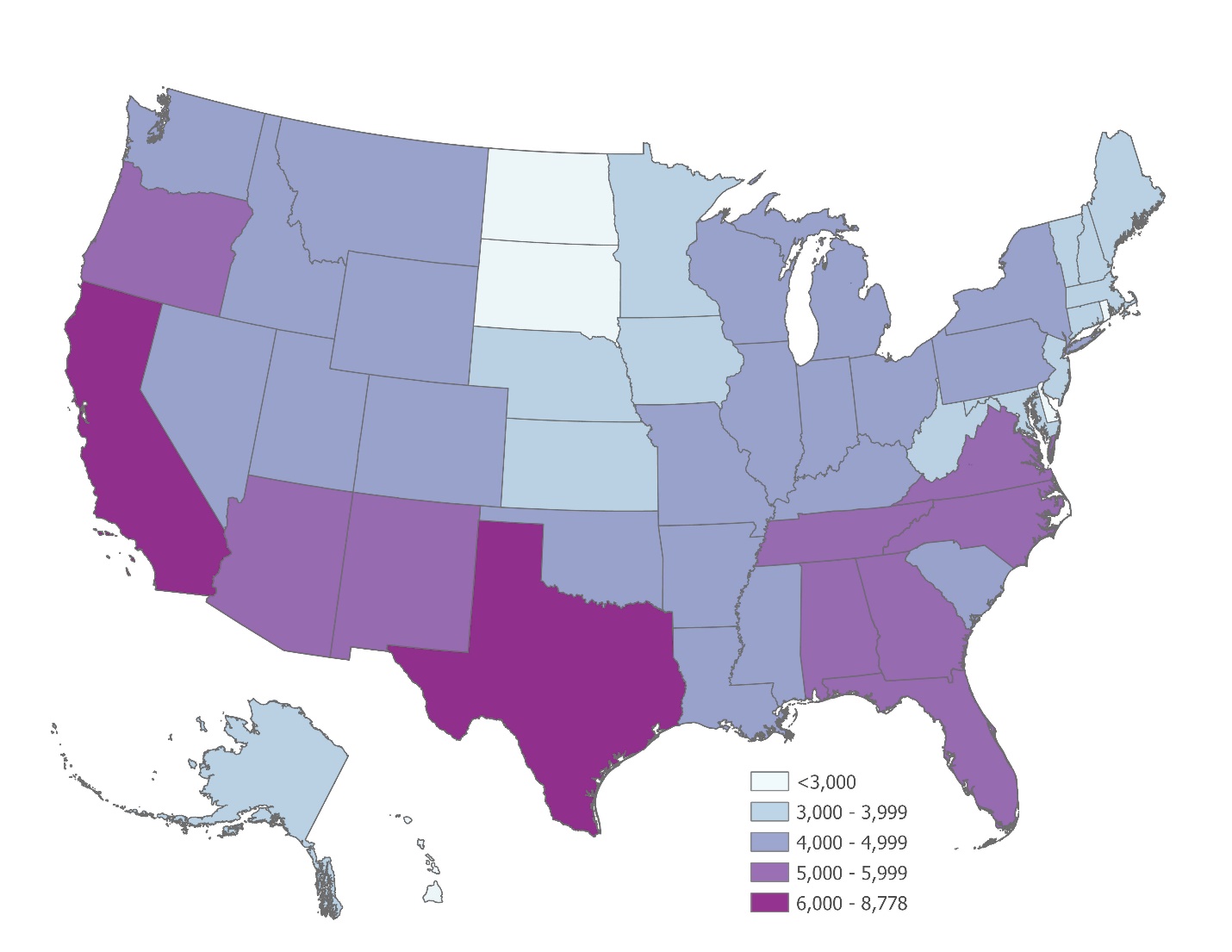As any outdoors lover knows, wildlife are not distributed uniformly across the landscape, but individual species have very particular habitat needs. Climate is the principal determinant of a region’s flora and fauna: Palm trees don’t grow outdoors in Alaska, nor do caribou wander around Florida. Although as a rule, the diversity of species increases as one moves south towards the equator, the natural diversity of species in any given region is dependent on a host of factors. These include the complexity of terrain, type of soils, interconnections with other regions, and even the lingering effects of Pleistocene glaciers. The states with the greatest number of species are for the most part clustered along the nation’s southern edge (Figure 1.4). The top-ranking states for total number of species are California and Texas followed by Arizona, Alabama, Georgia, and North Carolina (NatureServe 2021). Looking instead at the levels of risk (that is, the proportion of a state’s species that are vulnerable, imperiled, or extinct), Hawai`i and California dominate all others (Figure 1.5). Indeed, an extraordinary 83 percent of Hawai`i’s native species are at increased risk of extinction (NatureServe Network 2021).

Figure 1.4. Species diversity by state. This map represents the number of species in each state for taxonomic groups comprehensively assessed by the NatureServe Network (see Fig. 1.3). Species diversity— or richness—is highest along the Pacific Coast, and more generally along the nation’s southern edge. (Source: NatureServe Network 2021).

Figure 1.5. State patterns of risk. This map displays the percent of species with elevated risk levels (GH – G3) for taxonomic groups comprehensively assessed by the NatureServe Network (see Figure 1.3). Hawai’i displays by far the highest levels of extinction risk among its species, followed by California (Source: NatureServe Network 2021).

Figure 1.6. Distribution of imperiled species in the US. Mapping the number of imperiled species (G1 or G2) across the nation using an equal-area grid (hexagons = 49 square miles) highlights the biological importance of regions such as Hawai’i, coastal California, the panhandle and central ridge of Florida, and the southern Appalachians (Source: NatureServe Network 2021).
NatureServe Network Programs maintain databases of precise locational data for most rare and endangered species, representing a valuable resource for military planners and resource managers. Because these state-managed data are developed and maintained according to nationally consistent standards developed by the NatureServe, they can be pulled together to provide a far more fine-grained view of the geography of imperilment across America. Mapping the number of imperiled species (G1 and G2) against an equal area grid (Figure 1.6) provides a striking depiction of where these very rare and often localized plants and animals are concentrated. Of particular note are the imperiled species concentrations apparent throughout Hawai`i, in many parts of California, in the central Appalachians, across the panhandle of Florida, and along the central ridge of Florida. Even a casual perusal of this map suggests a considerable overlap between this geography of imperilment and the location of many of the military’s landholdings, a topic that will be more fully explored in a later section.
Next Page: Causes of Declines
Author
Bruce Stein, Ph.D., Chief Scientist and Associate Vice President
National Wildlife Federation
